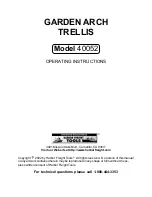
TeraOhm 5kV
15
Withstanding voltage test
Some standards allow the use of a DC voltage as an alternative to AC withstanding
voltage testing. For this purpose the test voltage has to be present across the insulation
under test for a specific time. The test result passes if there is no breakdown or flash
over. Standards recommend that the test starts with a low voltage and reaches the final
test voltage with a slope that keeps the charging current (into Ciso) under the limit of the
current threshold. The test normally takes 1 min.
Withstanding voltage test or dielectric test is usually applied for:
-
Type (acceptance) tests when a new product is prepared for manufacture,
-
Routine (production) test for verification of the safety of each product,
-
Maintenance and after service test for any equipment the insulation system of which
is affected to possible degradation.
Some examples for DC withstanding test voltage values:
Standard (only sample values)
Voltage
EN/IEC 61010-1 CAT II 300 V basic insulation
1970 V
EN/IEC 61010-1 CAT II 300 V double insulation
3150 V
IEC 60439-1 (clearance between live parts…), withstanding impulse
voltage 4 kV, 500 m
4700 V
IEC 60598-1
2120 V
Humidity and insulation resistance measurements
The quality of insulation resistance measurements outside the reference ambient
conditions could be affected by humidity. Humidity adds leakage paths onto the surface
of the complete measuring system, i.e insulator under test, test leads, measuring
instrument. Its influence reduces tolerances especially in the very high resistance range
– tera ohms. The worst conditions arises in case of condensation, which can also reduce
the safety. In the case of high humidity it is recommended to ventilate the test areas
before and during the measurements. In the case of condensed humidity the measuring
system must dry and it could take several hours or even few days to recover.
5.2. Guard terminal
The purpose of the GUARD terminal is to lead away potential leakage currents (e.g.
surface currents) which are not a result of the measured insulation material itself but of
the
surface contamination and moisture. This current interferes with the measurement
i.e. the Insulation Resistance result is influenced by this current. The GUARD terminal is
internally connected to the same potential as the negative test terminal (black one). The
GUARDs test alligator should be connected to measured object so as to collect most of
the unwanted leakage current, see the figure below.
















































